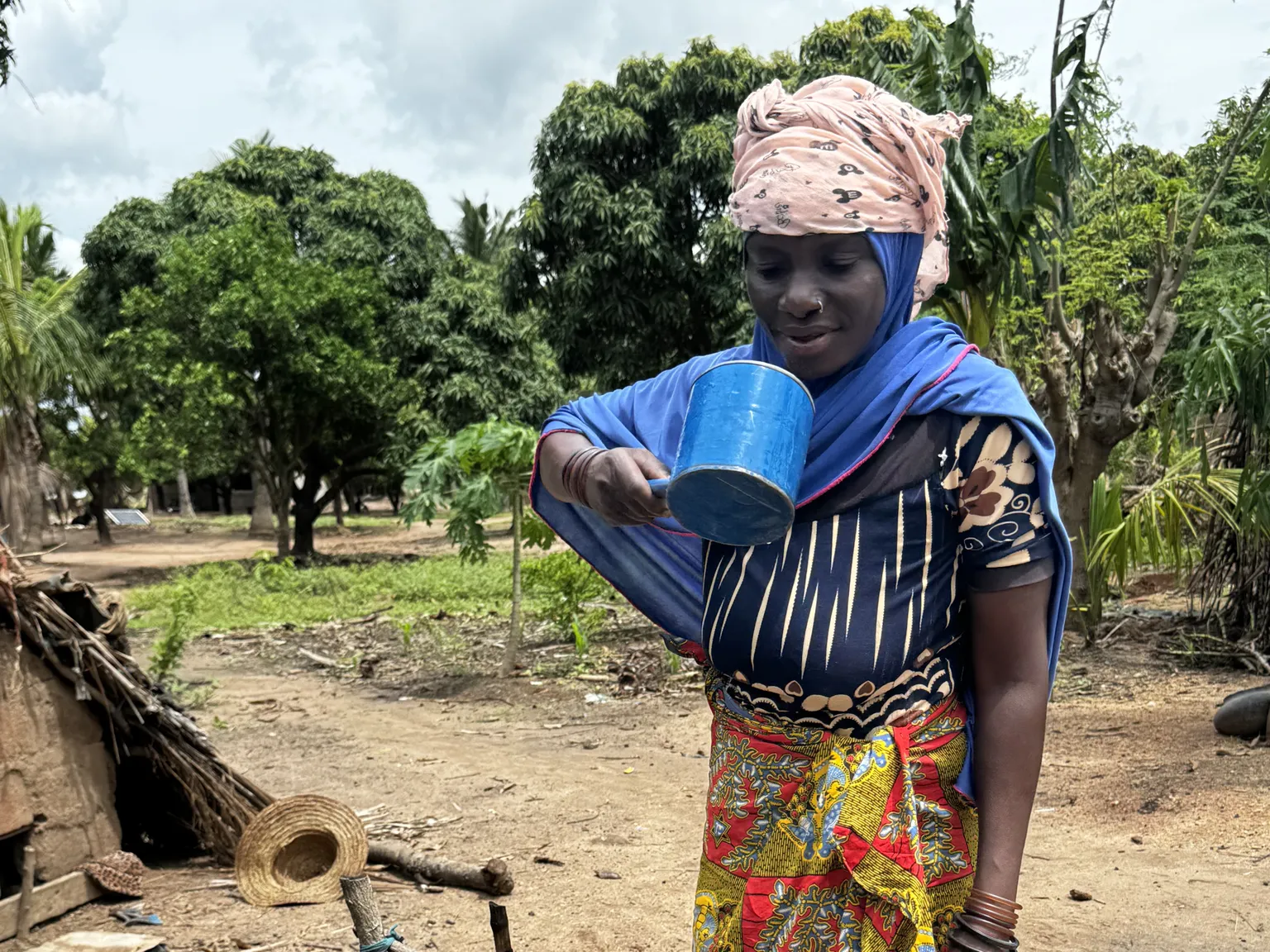Mulequia, the Mozambican village where water finally reached home

“I’m very pleased to have water at home,” says Cristina Selemane, standing beside the new tap in her yard in Mulequia. The midday sun is sharp, but she smiles easily. “I used to struggle a lot just to get water for bathing, drinking, and washing clothes.”
Until recently, Cristina—like most of the nearly 4,000 residents of Mulequia, a rural community in the locality of Muchepa, Nametória Administrative Post, Angoche District—walked more than two kilometres each day to collect water. The path was rough, and the water was often unsafe. Most days, the responsibility fell on women and girls. Diarrhoea and other waterborne illnesses were common, and time was lost to collecting water, leaving less room for school, farming, or rest.
It’s a situation mirrored across Mozambique, where 46% of the population does not have access to water, and diarrhoeal disease remains one of the leading causes of death for children under five. Women and girls bear the brunt of the burden, walking long distances for water that is frequently unsafe to drink.
Private water connections for all
When word spread that a water system was coming, Cristina and her partner began setting aside part of their income from selling surplus crops.
The water system was financed by the T-WASH II programme, supported by UK aid, and implemented under the framework of Mozambique’s National Rural Water Supply and Sanitation Programme (PRONASAR). The programme fund—managed by SNV—works to bring clean drinking water and hygiene education to an additional 239,200 people and hygiene education to 135,000 people.
Within a few months, Cristina and her partner had saved around 2,000 meticais (€27)—enough for a private household connection. These days, they pay a monthly fee of 200 to 300 meticais (€2.5-4), depending on how much they use.
To manage supply and avoid waste, the tap stays locked when not in use. So far, they haven’t had trouble keeping up with payments.


Water brings life new meanings
Still, challenges remained. Not all community members were in a position to pay for the full installation costs.
Anticipating this, the T-WASH II programme builds on a long-term partnership in WASH involving multiple stakeholders that is constantly learning and evolving. Its clear goal is to ensure sustainable and equitable access to water, sanitation, and hygiene for all.
To address issues of affordability, thirty households were identified to benefit from subsidised household connections through a facilitation process that prioritises the most vulnerable families.
Pedro Atumane was among the community members selected. The selection process was carried out in close coordination with the service providers responsible for constructing the water and sanitation systems, and with the involvement of local authorities, ensuring that the support reached those with the greatest need. “Even though we don’t have electricity,” he says, “we no longer get stomach aches or suffer from diarrhoea.”
Across sub-Saharan Africa, nearly 400 million people still lack basic drinking water services, but national and local governments alone cannot meet the full cost of safe, inclusive access. But with community engagement, fair cost-sharing, and long-term investment, it is possible to extend essential services to the people who have waited longest.
For Cristina and Pedro, life has taken on new meanings. Illness has declined. The community’s children attend school more regularly—to learn and play. Cristina has more time for farming, other responsibilities, and rest because none of them need to spend hours each day walking to collect water.
“Having water at home changes how you plan your day,” Cristina says. “We’re not always rushing.”
A partnership that learns and evolves
The Governments of Mozambique, the United Kingdom, SNV, and other INGOs and CSOs have long collaborated to improve nationwide access to water, sanitation, and hygiene (WASH).
Learn more about Namirukku, a behavioural change communication sanitation project that brought sturdier toilets to 4,500 households.